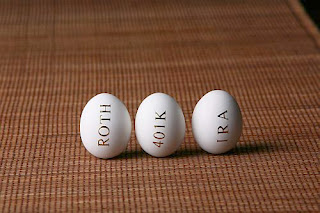 When a distribution from a Roth IRA is made payable to the Roth account owner, the owner has 60 days from the date he receives the funds to roll the funds over to another Roth IRA. This type of rollover can only be done once every 12 months. No other rollovers can be done out of either the distributing Roth IRA or the
When a distribution from a Roth IRA is made payable to the Roth account owner, the owner has 60 days from the date he receives the funds to roll the funds over to another Roth IRA. This type of rollover can only be done once every 12 months. No other rollovers can be done out of either the distributing Roth IRA or thereceiving Roth IRA. Funds can still be rolled into those accounts though.
But, funds are not locked in those accounts for a year. Even though you cannot do another rollover you can still do a direct transfer of any of the funds in either Roth account to another Roth IRA. A Roth recharacterization can also be done from either account because it must be done as a direct transfer.
A rollover from a Roth 401(k) (or similar employer Roth plan) does not count. If the check from the employer is made payable to the plan participant, the 60-day rollover period does still apply but there is no once-per-12-month limit.
Funds that are not eligible for rollover, but are nevertheless rolled over, become excess contributions in the receiving account. Excess contributions are subject to a penalty of 6% per year for every year they remain in the account. The penalty is reported on Form 5329, which is filed with the account owner’s federal income tax return. If the form is not filed, the statute of limitations does not start to run on the penalty.
All of the above limits and potential problems can be eliminated by doing direct transfers. Instead of having a check made out to the individual, it should be made out to the receiving institution for benefit of the individual’s Roth IRA account. Then there is no 60 days to worry about, no once-per-year rule, and no worries about excess contributions.
IRS can allow extra time to complete a rollover in limited situations. The catch - the fees you have to pay. The extension can only be granted by requesting a private letter ruling. The IRS fees range from $500 to $3,000 depending on the amount of the rollover. In addition, you have to pay someone to prepare the ruling request. There is no guarantee that IRS will grant any request. If the request is denied, there are no refunds.
- By Beverly DeVeny and Jared Trexler














